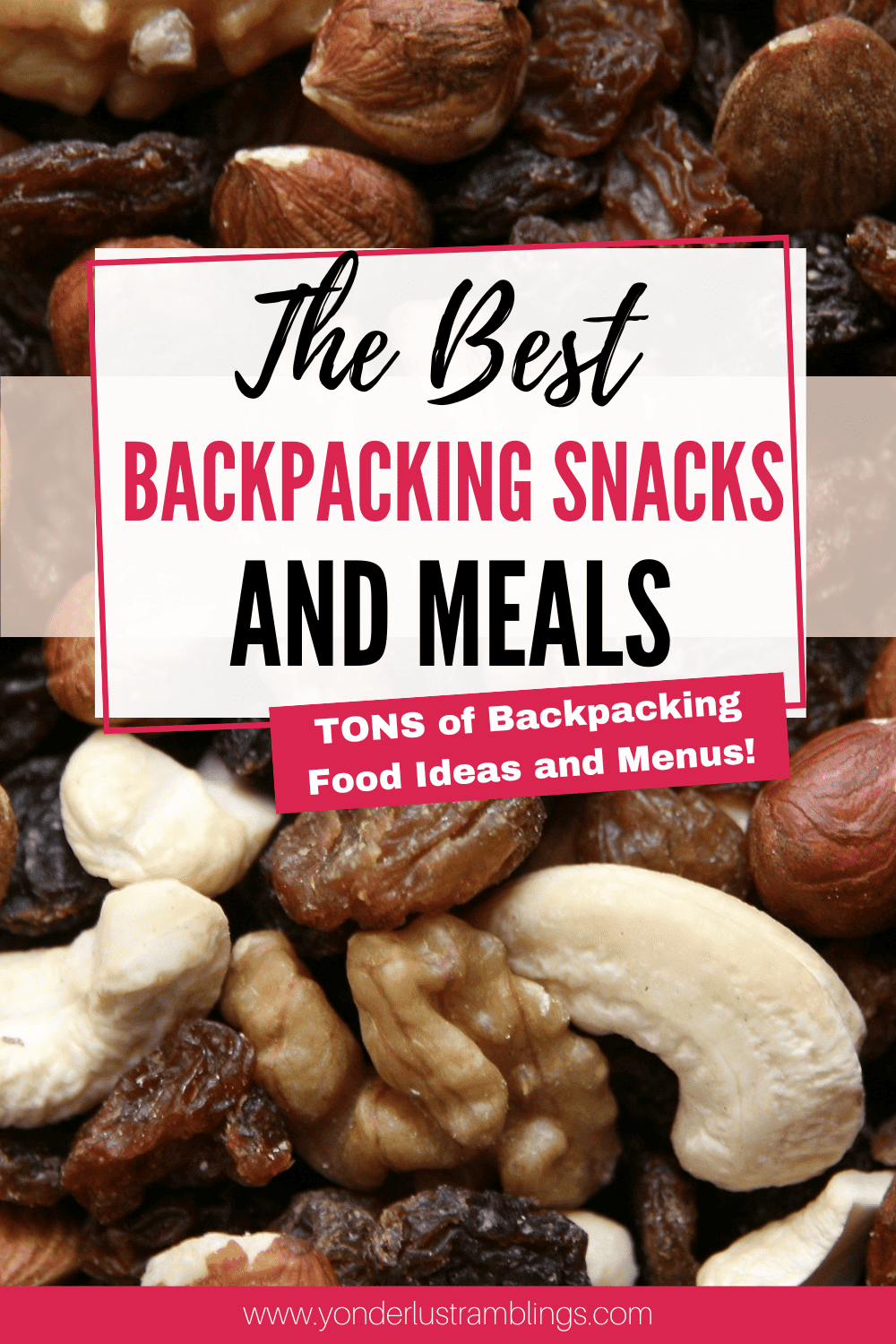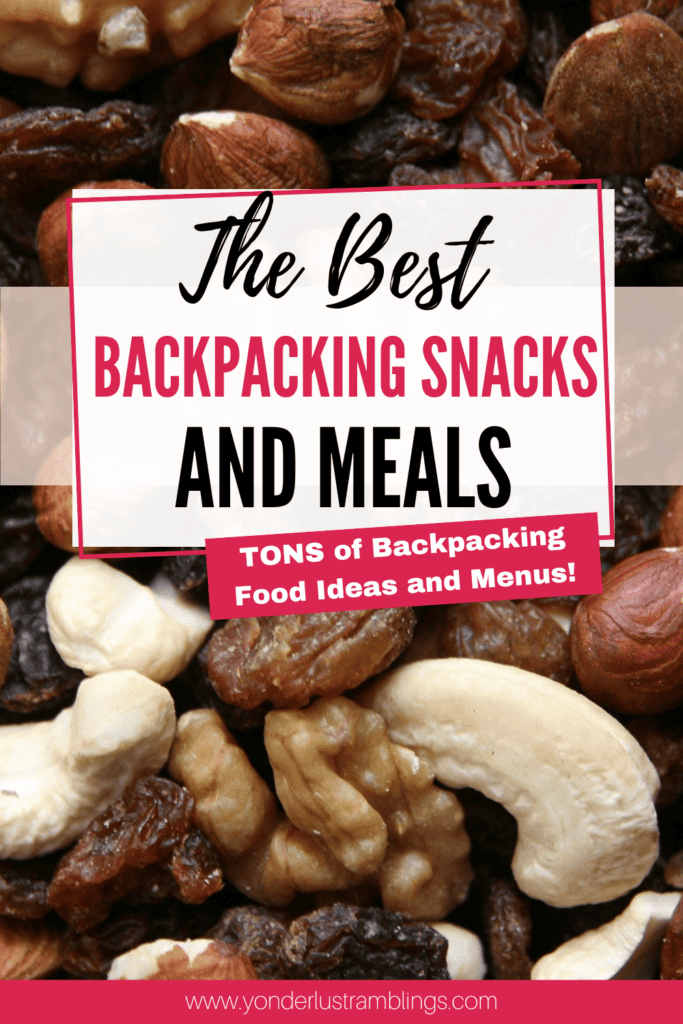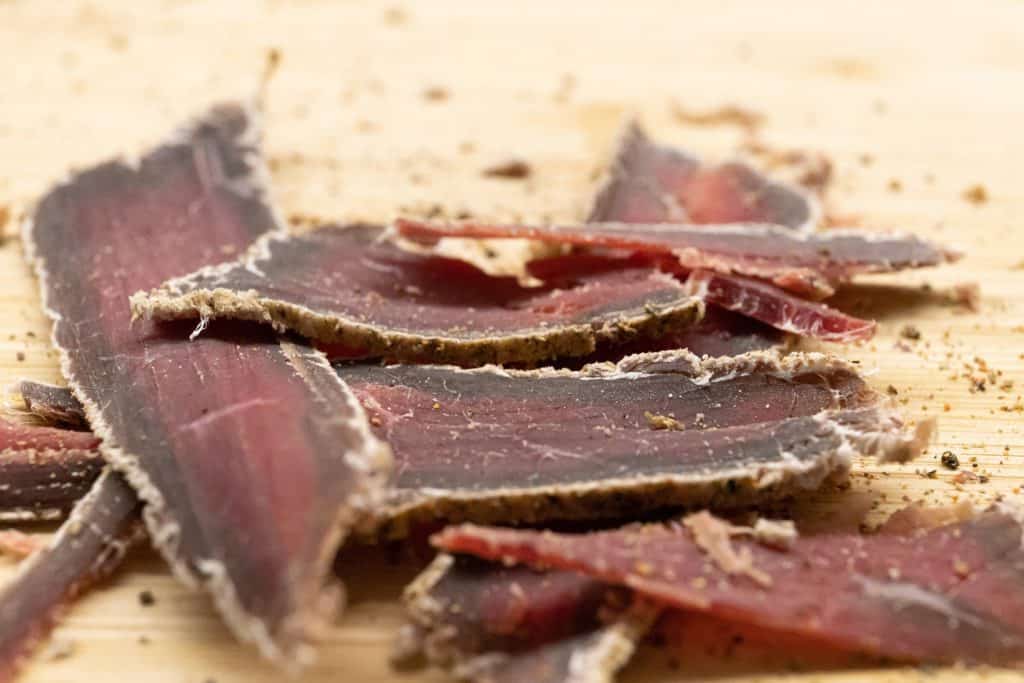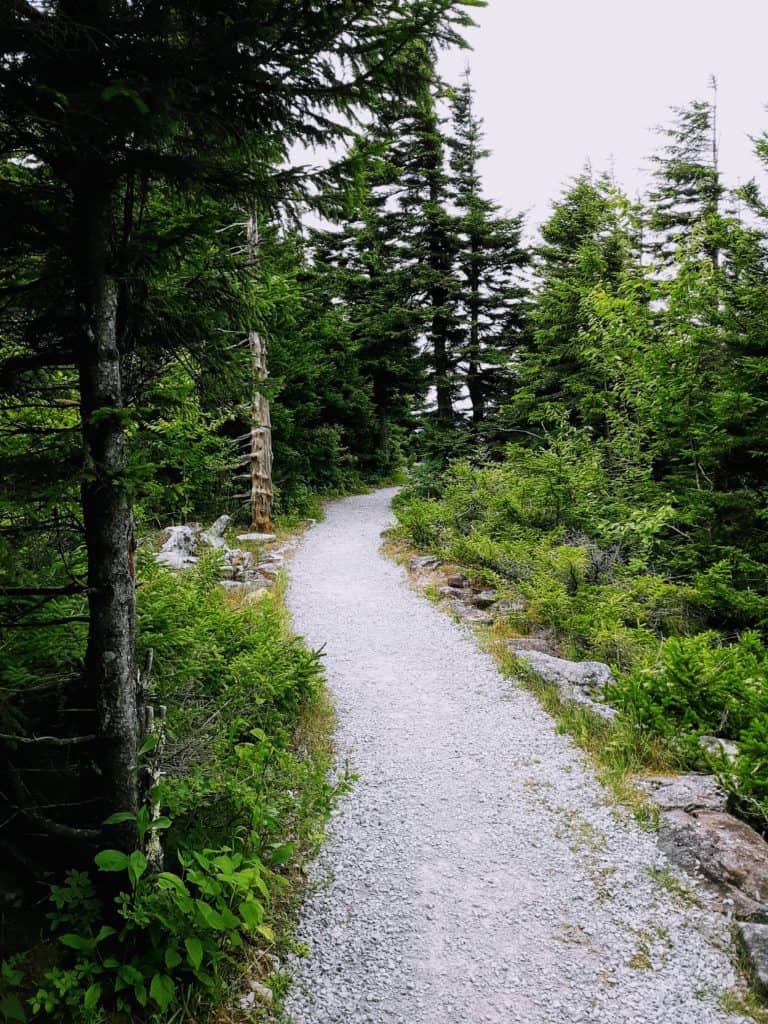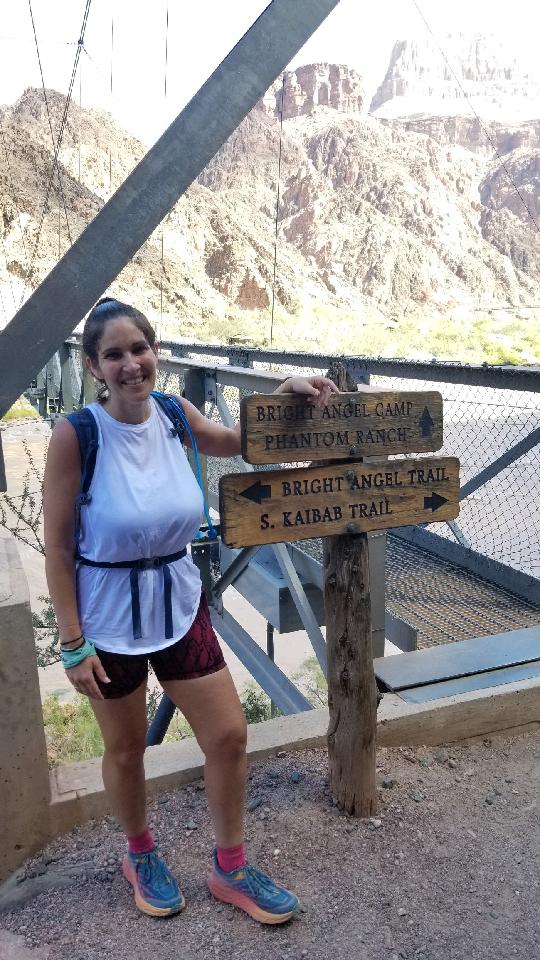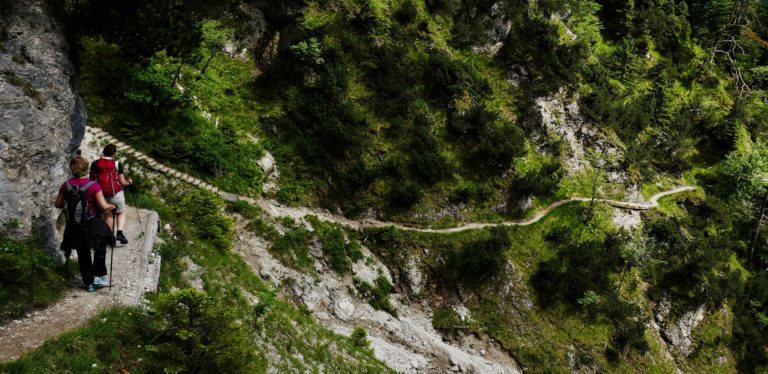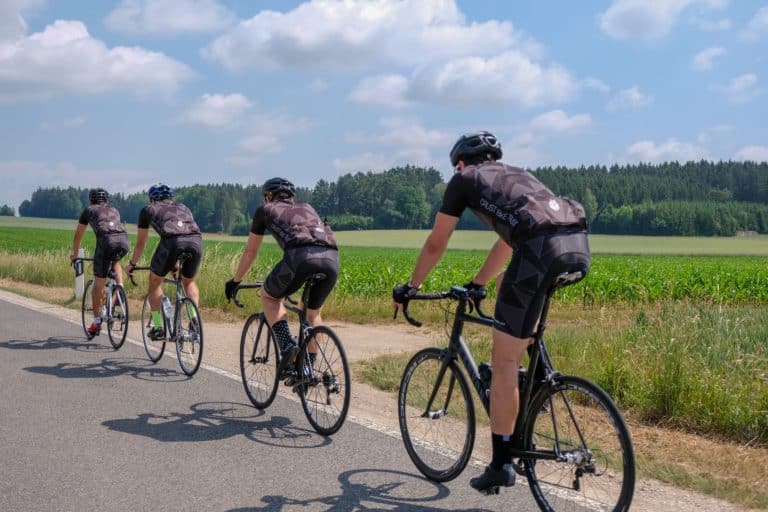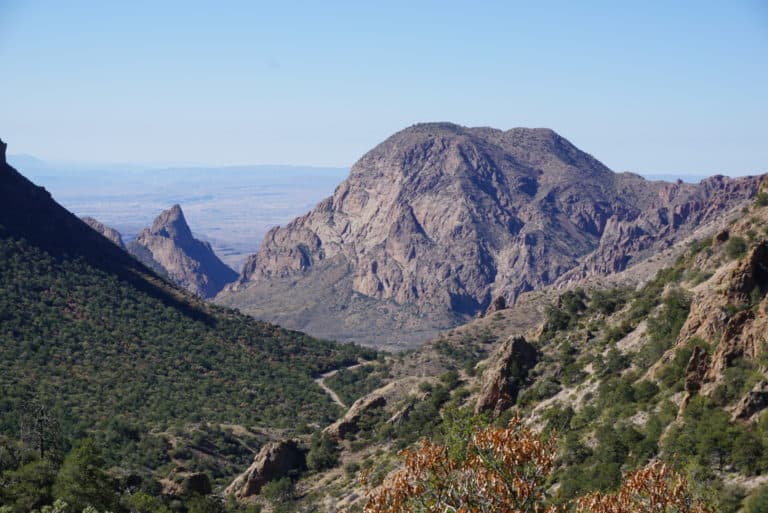The Best and Tastiest Backpacking Snacks and Meals
We all know hiking is awesome, but you can enhance the entire experience even more with the best and tastiest backpacking snacks and meals. Don’t just settle for eating the same boring things for days on end, get some inspiration to create your own menu of the best food for backpacking to flavor your trip! Below you will find:
- How to Choose Your Backpacking Snacks and Meals
- How to Make Your Own Backpacking Snacks and Meals
- Helpful Tips to Make the Most of Your Backpacking Snacks and Meals
- Gear You Will Need to Make Your Backpacking Snacks and Meals
- A “Don’t Forget” Checklist
- And of Course – Backpacking Snack and Meals Ideas PLUS SAMPLE MENUS that you can download!
Disclosure: Below are some affiliate links-these are all products I highly recommend. I won’t make any recommendations on this page that I haven’t tested or personally used!
Table of Contents
The Best Backpacking Snacks and Meals
To preface this post, I want to quickly differentiate between backpacking snacks and meals, and day hiking snacks. If you are planning a day hike, whether short or all day, you will mainly want to bring hiking snacks, consisting of smaller snack items, and maybe one or two larger items, like a sandwich. Some day hikers like to stop for a food break and cook food, which is totally fine, but still different from the approach that you will need to take when backpacking.
Learn more about the best day hiking snacks, including a
handy hiking snacks checklist HERE!
Backpacking is an overnight event, so you are looking at at least a day’s worth of backpacking snacks and meals, or more if your hike is multi-day. This means that the food you take backpacking plays an extremely vital role in your performance and safety, and needs to be planned out intentionally. Your backpacking food will need to be able to successfully fuel you throughout your backpacking trip, while remaining lightweight.
Top Things to Consider When Choosing Your Backpacking Snacks
- LIGHTWEIGHT – when it comes to backpacking, watching your weight is king
- TASTES GOOD TO YOU – if it doesn’t actually taste appealing to you, you won’t want to eat it
- CALORIE DENSE – calorie dense foods, like nuts, peanut butter, etc., are ideal backpacking snacks
- EASY TO COOK/MAKE/EAT – don’t pack something that may take more time or energy than you are willing to spend on an exhausting day of backpacking
- NUTRITIONAL VALUE – having some nutritional value is a good bonus to strive for
- BRING ENOUGH – there’s no black and white answer to how much backpacking food you should bring, but depending on how long and exerting your hike is, you should aim for between 2,500 – 4,500 calories a day, then factor in how many days your hike will be. Another way of looking at this is to consume between 25-30 calories per pound of body weight per day. You can also check out this helpful hiking calorie calculator to help you get a good estimate
- SHELF STABLE – this means that your food can survive without refrigeration. While it is ok to bring some foods that have less shelf stability over the span of a couple days, like hard meats and cheeses, just be sure to eat these on the sooner end versus the later end of your backpacking trip.
Buying VS Making Your Backpacking Snacks and Meals
You can buy just about every backpacking snack I am about to list, or, with the help of a food dehydrator like this one, you can also make some of your own backpacking snacks.
Check out these DIY dehydrator snack recipes!
Tips for Your Backpacking Snacks and Meals
#1: Keep things spicy to avoid boredom – if you are going to be backpacking say, for a week, you may start to get bored eating the same things. Small packets of spices or condiments can go a long way in keeping your interest up, and these items are small and lightweight, making them ideal for backpacking. Think ketchup, mustard, mayonnaise, hot sauce, honey, or jelly packets. Or simple salt and pepper packets. Often, you don’t even have to spend extra money to acquire these items. Have leftover ketchup packets from that fast food lunch you grabbed? Hang on to them for your next backpacking snack or meal! Same goes for other condiment packets. If you order fast food for breakfast, hang on to those couple extra honey or jelly packets, as those can come in handy for backpacking snacks and meals as well! I usually just keep a Ziploc bag on hand at home that I can keep stocked with leftover packets I acquire from fast food joints, and repurpose them later for backpacking snacks and meals. However you go about acquiring your spices and condiments, here’s a helpful list to start with:
- Ketchup
- Mustard
- Mayonnaise
- Hot Sauce
- Honey
- Jelly
- Salt
- Soy Sauce
- Pepper
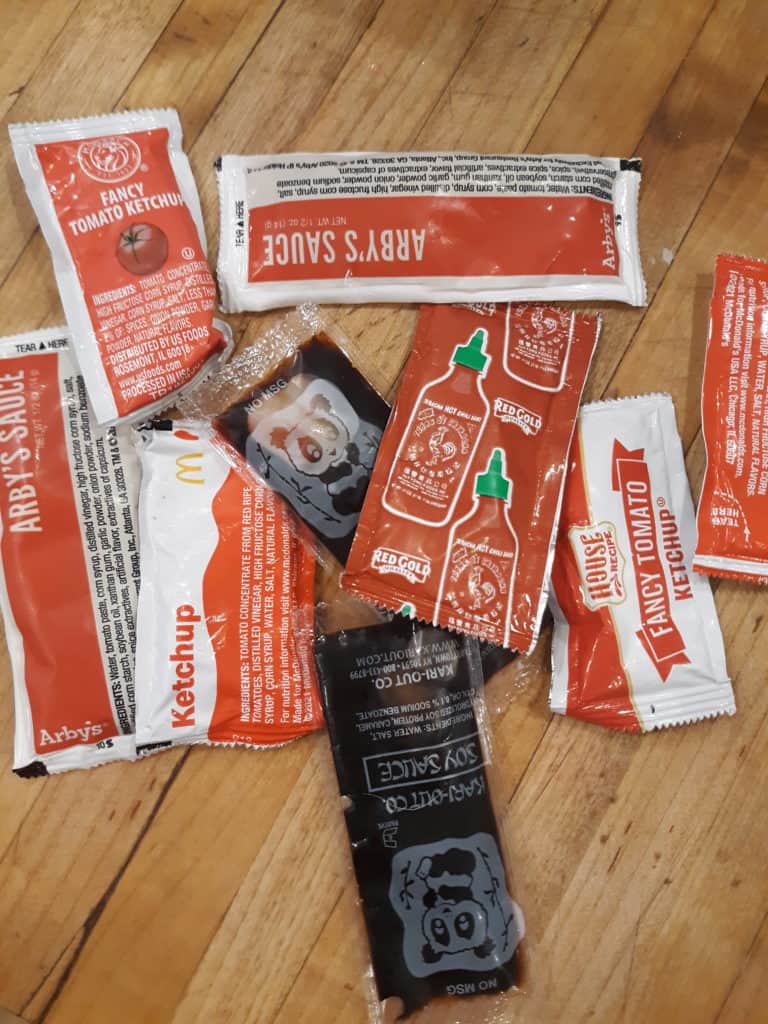
#2: Use Ziploc bags – this will make it easy for you to repackage and repurpose. Ziploc bags help prevent spills and leaks, can keep out water, and are lightweight. Plus, once you are done eating the food in one Ziploc bag, you can repurpose it for another job, like containing trash items.
#3: Think fresh – too much dehydrated backpacking snacks and meals can burn you out pretty quick, so try and stay creative and mix in whatever fresh backpacking snacks and food items you would enjoy, while keeping things lightweight. Carrots are a personal favorite of mine. They hold up well (won’t get smooshed in my pack), have a refreshing texture difference, and have zero waste (no peels, cores, etc.). Apple slices or applesauce pouches are another of my favorite ways of getting a dose of fruit into a backpacking snack! Applesauce pouches are lightweight and compact, and are extremely refreshing, especially on hotter trips. Sandwiches with fresh ingredients are also great, but if you are planning a multi day backpacking trip, eat your sandwiches earlier in the trip since they are less shelf stable, and also may not hold up as well to being in a pack for a long time.
#4: Hot backpacking drinks – it’s nice to bring along a packet of hot cocoa, tea, or instant coffee, for a warm drink at night or in the morning!
#5: Take a test run – test out which backpacking snacks and meals resonate with you the best. Especially if you are a newbie backpacker, make sure to take a full day hike or easy overnight hiking trip and test out a few backpacking snacks and meals to make sure that everything agrees with you.
Best Backpacking BREAKFAST Meals and Snacks
- Instant Oatmeal – a classic that can’t be beat! Lightweight, easy to make, and full of energy to keep you going! I like to mix in a squeezable peanut butter pouch for added energy! You can also mix in honey, dried fruit, or nuts. Oatmeal is a perfect customizable vessel for breakfast, and that’s why it is my backpacking breakfast food go to!
- Tortillas with honey, nut butter, or Nutella (you can grab all three in handy packet sizes: honey packets, nut butter packets like peanut butter or almond butter, and Nutella spread packets). Tortillas are great vessels to use as they are flat to pack and don’t take up much room, plus you can roll them up for a mess free, portable, and quick meal!
- Instant Coffee or Instant Tea – if I have the time, nothing beats a relaxing cup of coffee or tea in the morning before hitting the trails!
- Bars – my favorite is RX bars. Simple, straightforward, uncomplicated ingredients.
- Dehydrated Breakfast Meal – if I have the time, I might make a dehydrated breakfast meal like granola with berries, or eggs and meat. Below are a couple dehydrated breakfast meal suggestions:
-
- Mountain House Breakfast Meals – Biscuits and Gravy, Eggs and Bacon, Breakfast Skillet, or Granola and Fruit
- Peak Refuel – Breakfast Skillet, Mountain Berry Granola
-
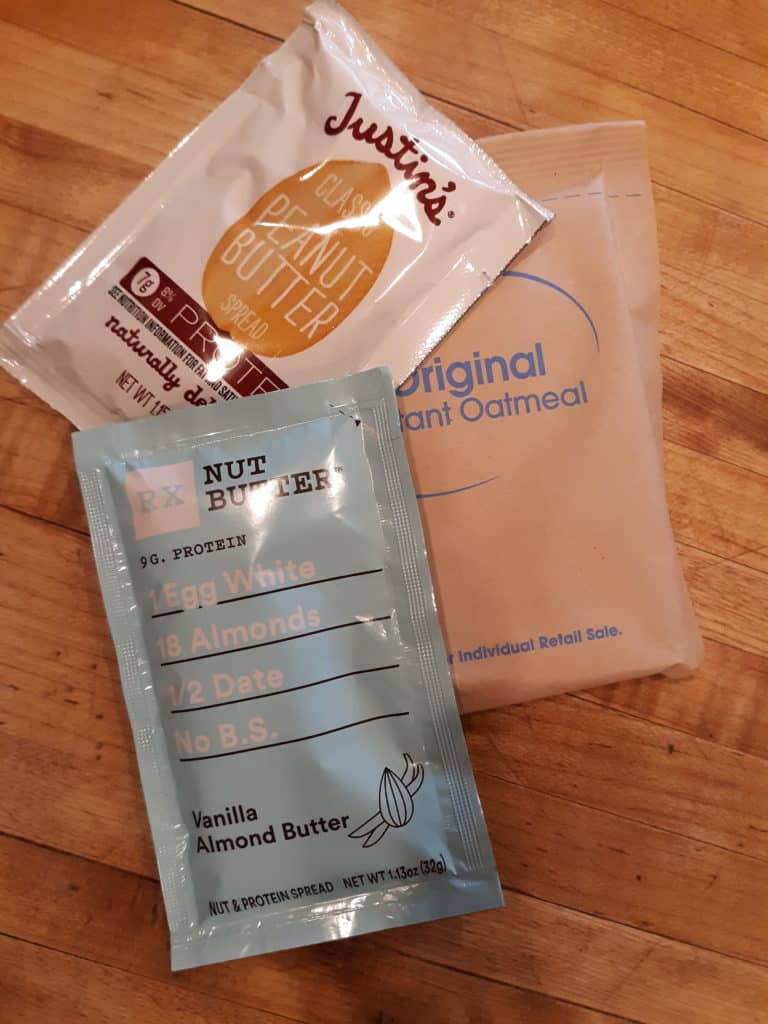
Best Backpacking LUNCH Meals and Snacks
Lunch is usually the meal that I have the quickest, as I am usually still mid hike, and trying to be efficient with time management. Sandwiches are my go to’s, as I can prepare them ahead of time, thus ensuring a quicker lunch meal stop if needed. Plus, sandwiches are portable and can be eaten on the go if necessary.
Sandwiches:
- tortilla “sandwiches” with:
-hard cheeses (think Parmesan, Romano, etc), and meats
-peanut butter and jelly
-peanut butter and honey
-peanut butter and banana
-Nutella
(tortillas are a great vessel for making sandwiches, as they are flat, lightweight, and hold up well in a backpack). Peanut butter pouches and jelly packets are great lightweight options.
- bagel sandwiches – bagels are a little “sturdier” and also hold up well, though they take up a little more volume. Can be paired with peanut butter pouches and jelly, or make a tuna or chicken sandwich with these tuna packets and chicken packets that are lightweight, flat, and easy to pack!
- classic sandwich with bread – regular bread slices won’t hold up as well to getting smooshed in a backpack, but if I am only going on a one day backpacking trip, this will often be my choice as I don’t worry about things lasting as long in a pack. Nothing beats a classic peanut butter and jelly sandwich, or meat and cheese sandwich, or tuna and mayonnaise sandwich. All the ingredients you need to make a classic backpacking sandwich are below:
- Peanut butter packets (or other types of nut butters like almond butter)
- Jelly packets
- Hard cheeses like Romano and Parmesan
- Meats like Salami
- Tuna packets, chicken packets, or salmon packets
- Mayonnaise packets
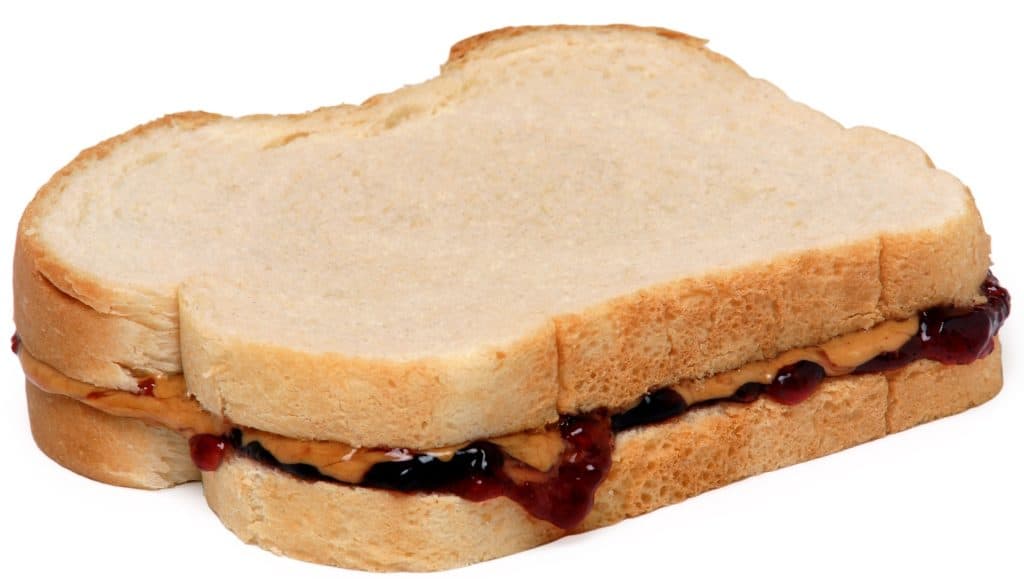
Need to supplement your lunch with a few additional backpacking snacks? I will get more into backpacking snacks specifically below, but here are a few things I like to supplement my lunches with:
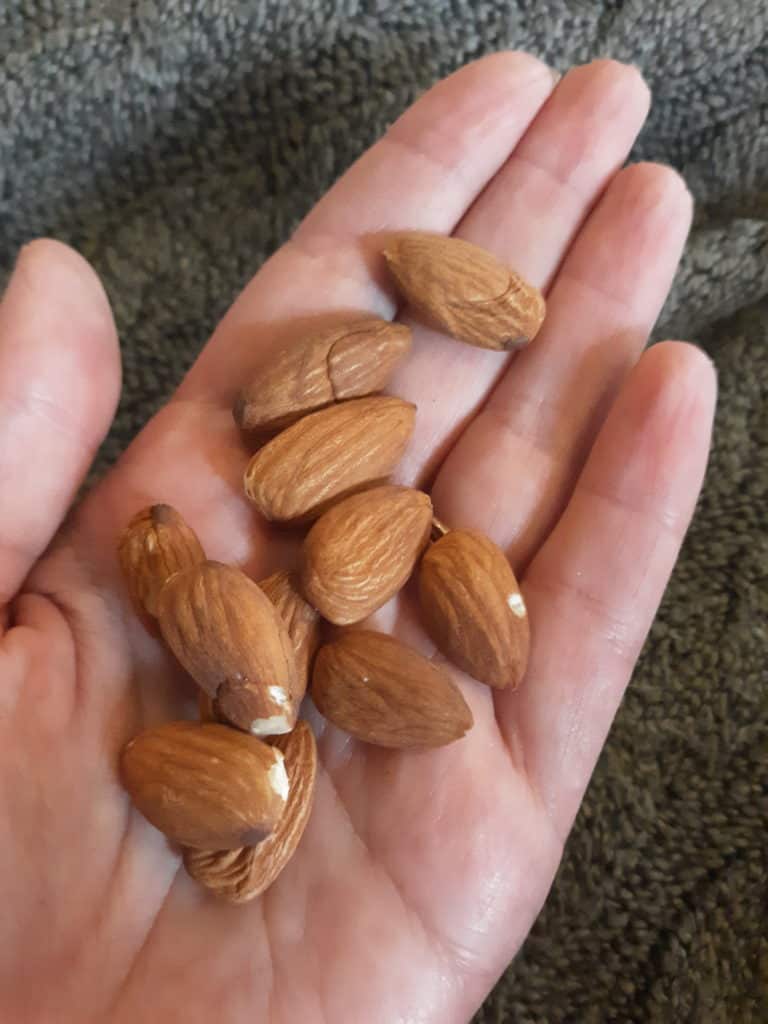
Best Backpacking DINNER Meals and Snacks
Dinner is usually the meal that I will sit down, prep, cook, and take my time with, as by evening I am hopefully off the trail, in camp, and ready to settle in for the night. That being said, dinner is also where I try to get as much variety. I usually go with packaged dehydrated meals for dinner, since I can get a meal with carbs, veggies, spices, etc., all in one package. Dehydrated meals are lightweight, compact, hold up well in a pack, calorie dense and filling, and are easy to make (just need hot water). Suggestions for some of my favorite dehydrated dinner meals are below:
- Mountain House Meals – Spaghetti with Meat Sauce, Chili Mac with Beef, Chicken Fried Rice, Fettuccini Alfredo, Pasta Primavera, Buffalo Style Mac and Cheese, Chicken and Mashed Potatoes, 24 Serving Classics Meal Assortment Bundle
- Backpackers Pantry – Lasagna, 3 Cheese Mac and Cheese
- Peak Refuel – Chicken Alfredo, Chicken Pesto Pasta, Cheesy Chicken and Broccoli, Chili Mac, Pork and Rice, Peak Refuel Basecamp Bucket Bundle
*visit the Mountain House Meal Store for lots of other backpacking food ideas
*visit the Backpackers Pantry Store for lots of other backpacking food ideas
*visit the Peak Refuel Store for lots of other backpacking food ideas
In addition to dehydrated dinner ideas, here are a couple other lightweight, quick, easy, and filling backpacking dinner options:
- Ramen noodles
- Instant potatoes
- Instant Macaroni and Cheese (individual containers can be somewhat bulkier than other options)
- Instant Pasta (make sure to pick packets that only need water and not milk)
(BONUS – these only require hot water to make!)
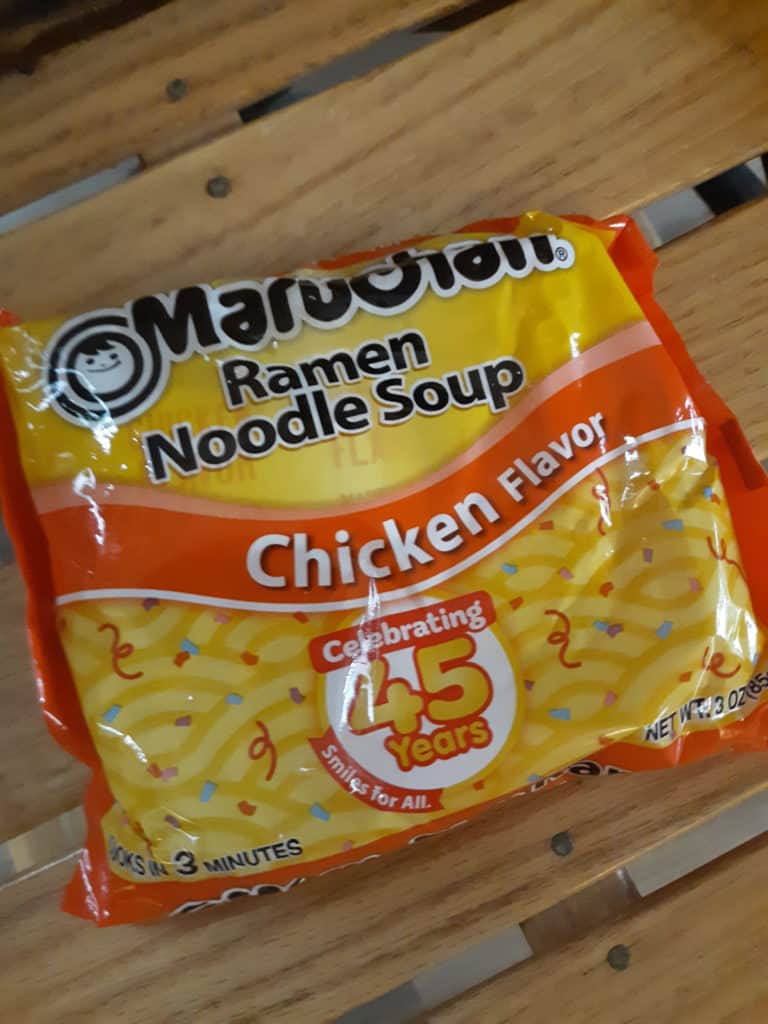
Don’t Forget Dessert!
I don’t always pack dessert, but to be fair, I am not naturally a big dessert person, so I usually opt to conserve space and weight instead. But if you know that you ARE a dessert person, and your day is just not complete without it, or maybe you just like the morale boost of knowing dessert is waiting for you, be sure to bring something along. This could be as simple as a candy bar or little bag of candy, or Nutella spread on a tortilla, or you could check out some of these dehydrated meal dessert options:
Dehydrated /Freeze Dried Desserts:
Best Backpacking SNACK Ideas
These are the best backpacking snack ideas, whether they serve as a quick, on the go fueling up during your hike, a supplement to a backpacking meal, or a smaller meal on their own. You will notice that all of these backpacking snack recommendations are easy to pack, lightweight, and quick to snack on. Plus they provide calories and energy for fuel!
- RX Bars
- Honey Stinger Waffles
- Honey Stinger Chews
- Tuna packets, chicken packets, or salmon packets
- Peanut Butter pouches (or other types of nut butters)
- Applesauce pouches
- Olives
- Trail Mix (buy prepackaged or make your own DIY mix)
- Nuts (pecans, walnuts, and almonds have some of the highest caloric content per ounce)
- Beef Jerky
- Dried Fruit
- Crackers (can be combined with tuna packets, peanut butter and/or jelly, and hard meats and/or cheeses)
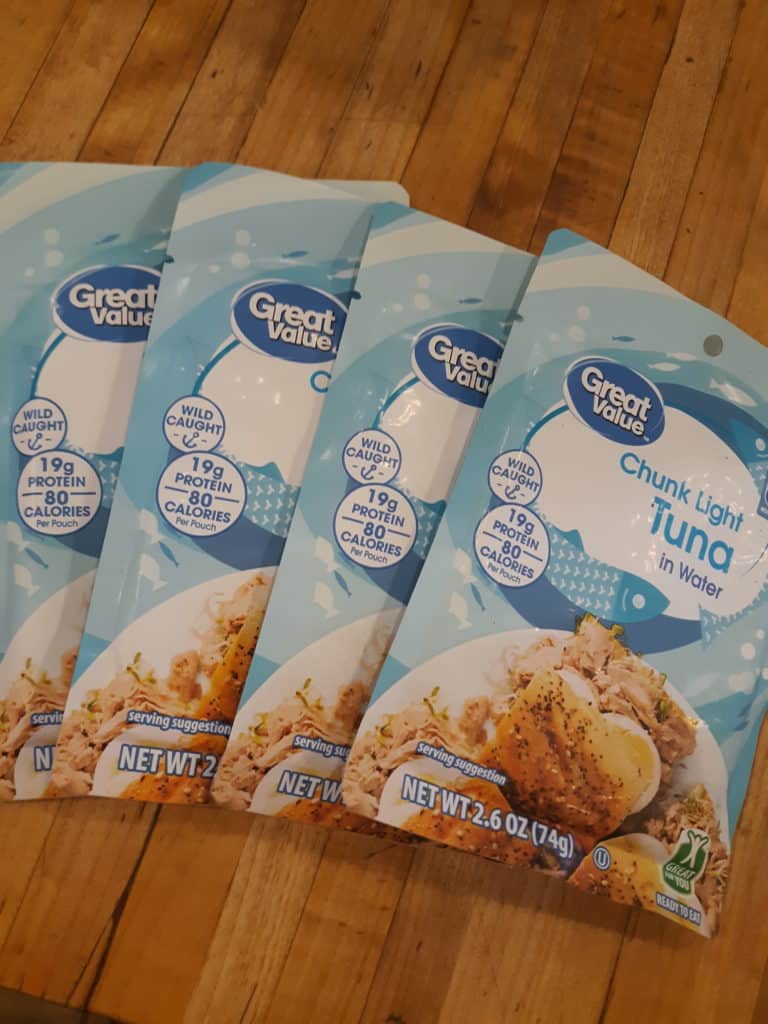
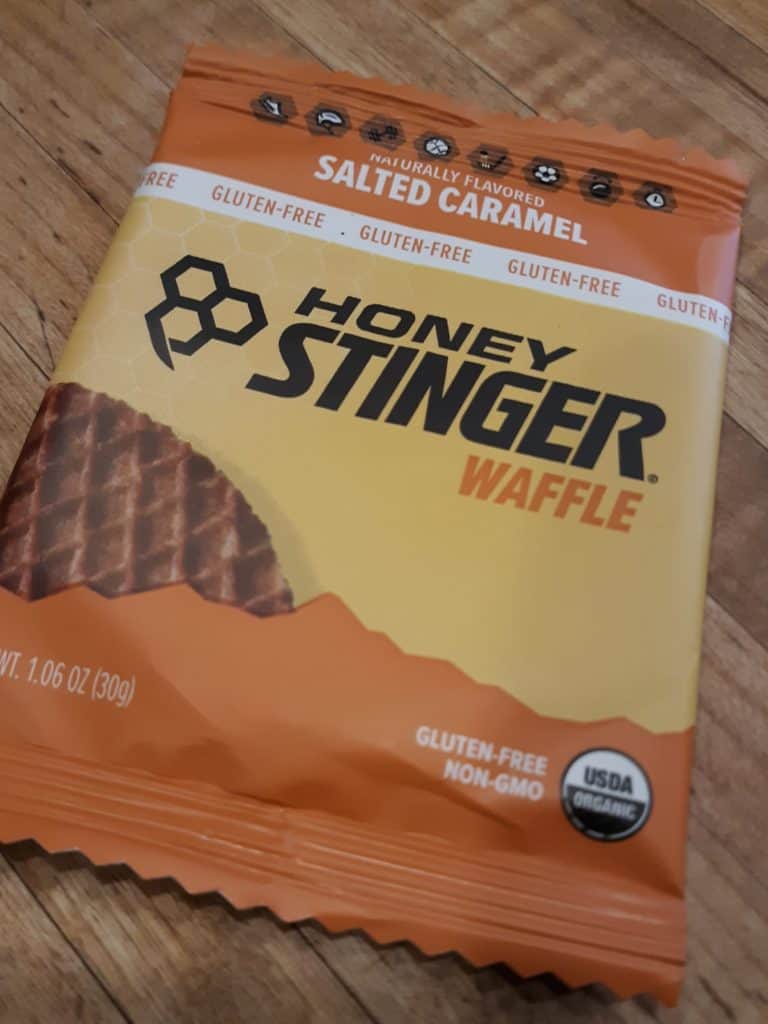
What Gear Do You Need to PREPARE Your Backpacking Snacks and Meals?
You will need some key items of backpacking gear to make many of these meals and snack ideas. Here are the necessary basics:
Don’t Forget!
- Food Storage – properly store and secure your food. Bear canisters are ideal for bear country, but they take up a big chunk of space, or you can do a bear hang. Even if you are not in bear country, there are other critters who will happily gnaw through your backpack to get to your snacks.
Learn how to do a proper bear hang here!

*Insider Tip: when in bear country, don’t forget to secure food and all fragranced items in your car as well, before leaving it parked during your hike! When I hiked California’s Mount Whitney, I heard plenty of stories from the rangers about people who left their cars parked during the day with trash from food items, leftover food scraps, even perfumed lotions, inside their vehicles, only to return later that evening or the next day to find a car broken into by bears.
- Leave No Trace – always pack out your trash from your backpacking snacks and meals. That even includes things like apple cores, coffee grinds, orange rinds, etc.
- Make Sure to Pack Enough Calories – you may burn through 2,000 calories a day on a normal day, but keep in mind that hiking burns more, especially if you are tackling a major trek and putting on 20 + miles a day. In that case, plan to snack on something at least once every hour or so. Overall, for an entire day of hiking with snacks and meals both included, you should aim to consume between 2,500 – 4,500 calories per day. This depends on how long and strenuous your hiking will be. Be proactive in providing your body with fuel, don’t wait until your stomach is growling. There is nothing worse than running out of steam halfway through a hike, and finding yourself stranded miles from a trailhead or civilization. When I hiked the Grand Canyon’s Rim to Rim, a 24 mile long hike, I made sure to snack on beef jerky, RX bars, and trail mix at least every hour, in addition to a lunch meal break, just to make sure I proactively kept my energy up for the intense climb up out of the South Rim!
- At the Same Time, Keep Weight in Mind and Don’t Go Overboard! – You definitely want to make sure you are bringing enough food to provide enough calories, but always keep weight in mind! Anything that is not meeting an intentional purpose probably doesn’t need to come. Occasionally I might sneak in a candy bar or small package of gummy bears, but I’m personally not going to bring along a bottle of wine or other heavier, cumbersome items. Every ounce matters when you have to carry it on your back!
- Maintain Caloric Density – while it is important to have variety and freshness, you don’t want the majority of your backpacking snacks or meals to come from, for example, fruits and veggies, as they are lower in caloric density. High fat foods pack more caloric density – for example, peanut butter, nuts, even chocolate if you are needing that little morale boost!
- Balance Your Nutrition – as I mentioned before, getting in as much of a balanced meal as you can will not only improve your performance, but keep you from burning out on the same foods. Try to make sure that you are getting a balance each day of protein, carbs, and fats, along with some fiber, fruits, and vegetables. You probably don’t want to eat solely processed foods for days and days on end.
- Simple – I have often heard friends planning backpacking trips talk about how they want to plan an elaborate meal at the end of their hike, and actually end up trying to lug steaks, potatoes, and beer or wine around to enjoy that elaborate dinner. The truth is though, as awesome as that sounds before you start your hike, by the end of a long day of hiking (or several long days), you’re probably going to want something quick and easy to prepare, with minimal prep work and minimal cleanup after. That’s why I love backpacking dinner ideas that just require hot water! The same goes for breakfast meals. If I have a full day of hiking planned, I am looking for simple and quick. If it is my last morning and I can take my time, then I may splurge with something more time intensive.
- Water – since water is not only necessary for hydration, but also for prepping many of these backpacking foods, make sure you have plenty of it. Also, make sure you have located water sources if any, and have a way to secure water safely in the backcountry. Here are my favorite water gear recommendations:
- Fuel – make sure to bring enough fuel to use for your portable stove
Need More Backpacking Gear Recs?
Download Your Own Backpacking Essentials Checklist HERE!
READY FOR A SAMPLE MENU???
Grab Your FREE Backpacking Menu HERE!
PIN for LATER!

